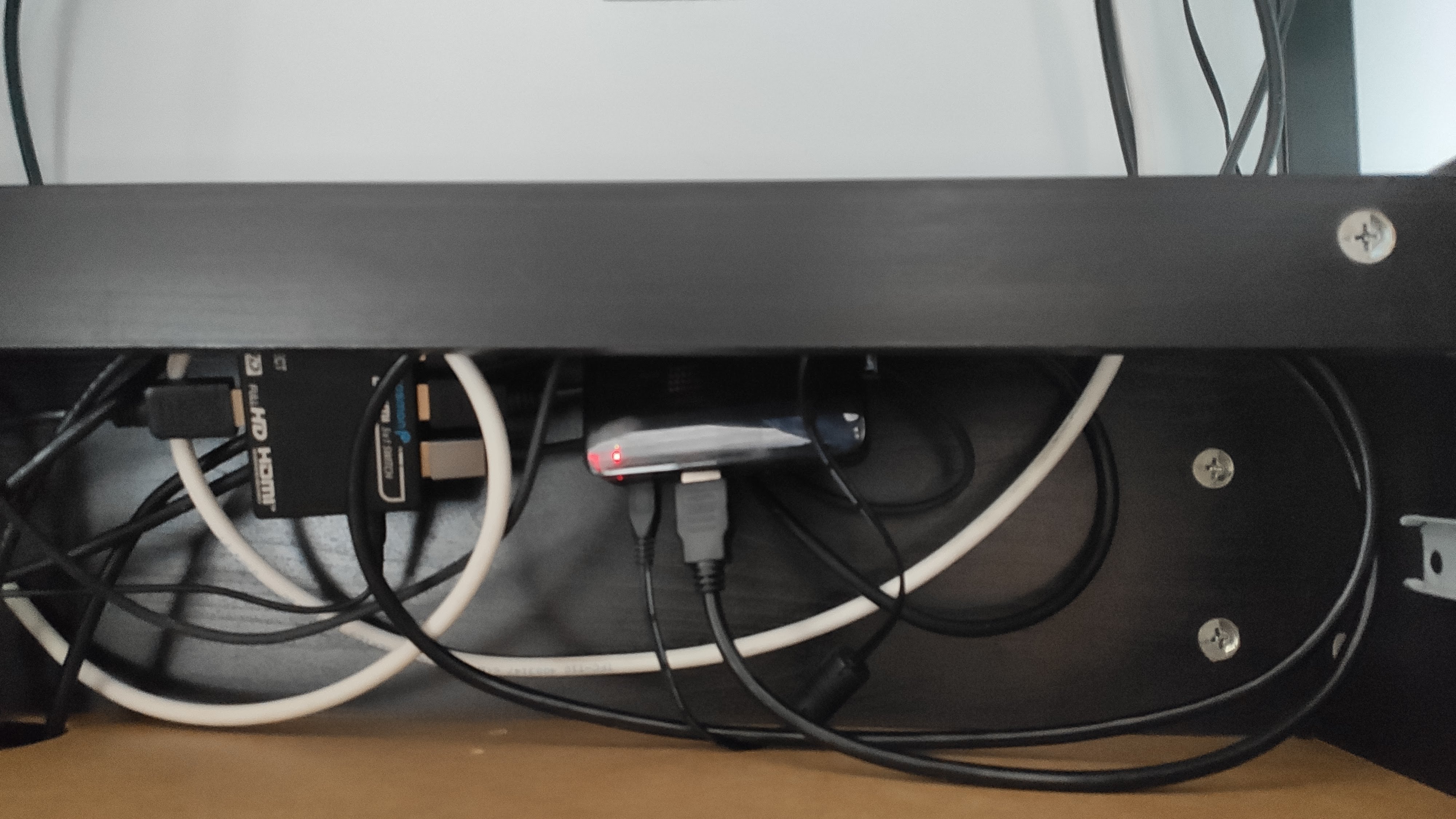4 minutes
Automation in Real Life

The picture in the banner of this post is a Raspberry Pi 3B in its Short Crust case (on the left), next to an HDMI switcher (on the right). All of this is housed behind the main drawer of my Micke desk from IKEA.

It wasn’t always like that. Just two weeks ago, this same Raspberry Pi had been gathering dust on a tablet for a couple of years. What happened?
Money talks
I was discussing with my partner about financial investments. She told me that every month, she would track her investments to know what kind of returns she was generating. Seeing the graphs she produced in an Excel-like sheet, I was impressed. This was really useful information that, for some reason, our financial institutions only generated in yearly reports. In theory, all I’d need to do to get the same data about my investments would be to take notes at fixed intervals during the year.
However, I’m too lazy for that.
I started thinking back to the Romhacking web scraping project I made a couple months back. Surely, I could create a similar scraping tool that would get infromation from my financial institution’s website. As with most corporate website, it is written in HTML from a template. Here’s a look at the data I wanted to extract:

Indeed, I hear you ask, how complex could it be? Turns out, it was really simple to do:
def get_data_from_institution(username, password):
website = "redacted (sorry folks)"
portfolio_website = "redacted (sorry again folks)"
br = mechanize.Browser()
br.set_handle_robots(False)
# Pro-tip: if your security can be defeated by faking a
# user-agent, you don't have security.
br.addheaders = [('User-agent',
'Mozilla/5.0 (X11; U; Linux i686; en-US; rv:1.9.0.1)' \
+ Gecko/2008071615 Fedora/3.0.1-1.fc9 Firefox/3.0.1')]
br.open(website)
br.select_form(id='login')
br['txtUserID'] = username
br['txtMotPasse'] = password
br.submit()
# We have successfully logged in, so let's open the portfolio
br.open(portfolio_website)
soup = bs(br.response().read(), 'html.parser')
data = {'date': datetime.datetime.now().strftime("%Y%m%d")}
# Get the amount of money in each account
for i, acc in enumerate(soup.find_all('img',
attrs={'src':'images/arrow.gif'})):
plan_id = acc.findNext('td')
description = plan_id.findNext('td')
plan_holder = description.findNext('td')
usd = plan_holder.findNext('td')
cad = usd.findNext('td')
account_name = description.get_text() + ' ' \
+ plan_id.get_text()
data[account_name] = [cad.get_text().replace(',', '')]
return pd.DataFrame(data)
I had a working script. What was remaining to do was to automate the process and make it accessible through the web. Bonus brownie points if I managed to automate a visualization of my investments (spoiler: I did!). Using my basic knowledge of Google Data Studio acquired at work, I was able to build a free dashboard to monitor my savings at home.

Side note, I read some books that suggest “couch potato” strategies for investing that require you not to panic when markets go down, and all that. Indeed, I’m just doing this for fun. I won’t use this graph to make financial decisions. I’m just glad that I get more data points than my partner without having to bother remembering to actually track my investments (just kidding, babe!).
Why stop there?
I now had a machine always connected that could perform automatic tasks as often as I wished. What else could I automate?
The next step I took was to automate the web scraping of RomHacking.net. Instead of doing it manually once in a while, my RPi 3 does it automatically once a day. This was, if the website goes down for whatever reason, I would already have saved most of what it contained. While this is still a local backup not available to the rest of the video game community, I will try to find a way to share these files automatically as well. Be patient, good things are coming! 😃
Final thoughts
This is all really neat. In the past, I only considered Raspberry Pis as RetroPie machines to play retro video games at home and perform simple tasks in labs. But why not combine them? Now, my Pi is always connected to my screen. I can play RetroPie any time I want, while knowing at the same time that my Pi is being useful by automatically doing background tasks that help me in my personal life.
Computers are mind-bogglingly awesome. Nowadays, we can do so much with so little. In fact, for the tasks I described in this article, even the RPi 3 is overpowered, since I could have used a Pi Zero . The only missing ingredient is our creativity and basic programming knowledge. I encourage everyone to learn scripting languages like Python or Bash, which are all that you really need to perform this type of projects.
I love when knowledge from my profession trickles down into my personal life and empowers me. Let me know in the comments what kind of crazy projects you came up with!
811 Words
2021-03-03 17:02